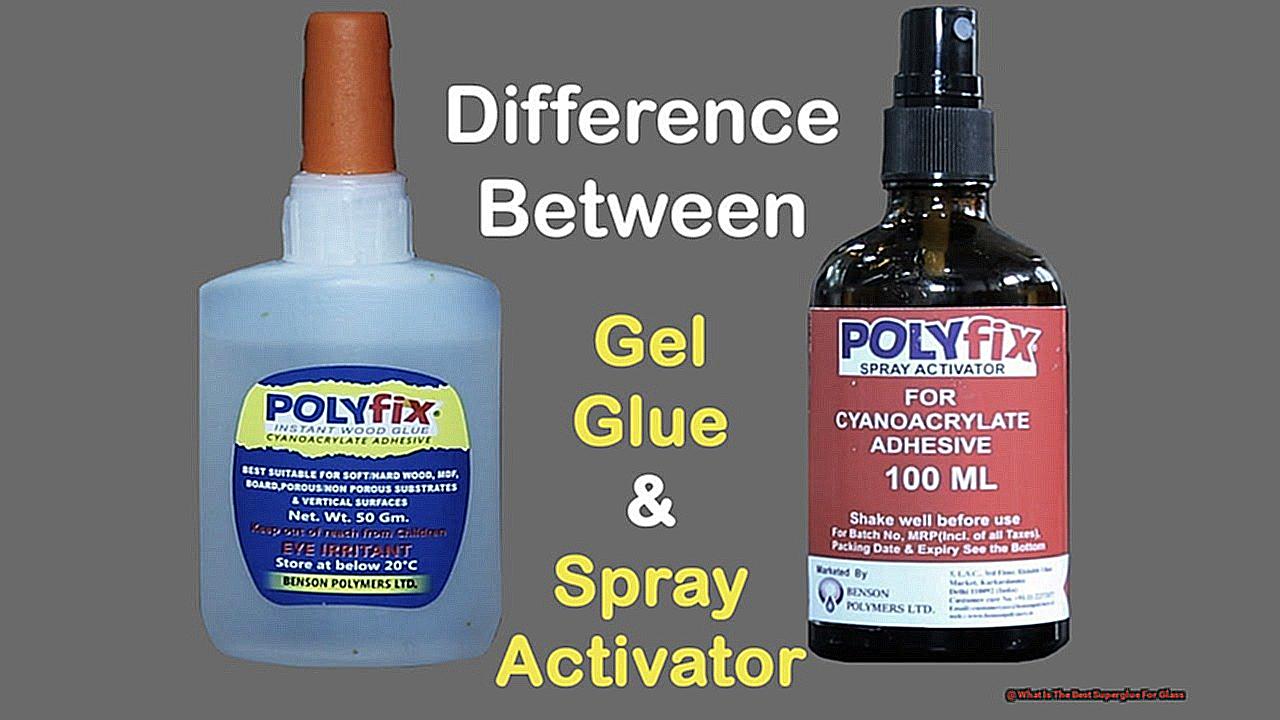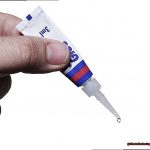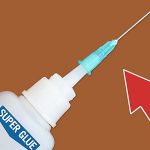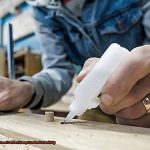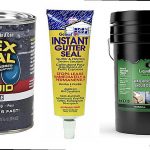Looking for the perfect adhesive to bond glass?
Look no further. We’ve discovered the ultimate superglue for glass that will make your DIY projects a breeze.
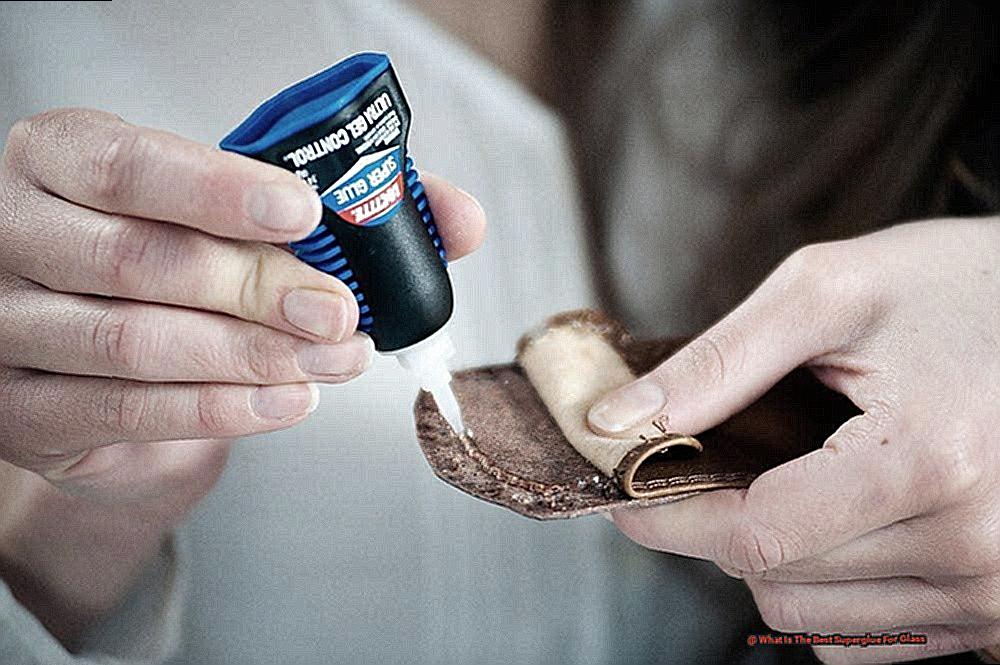
With exceptional strength and versatility, this glue outshines the competition. No need for extra steps or specific conditions – this superglue ensures seamless adhesion every time.
Say goodbye to cracked glass and hello to a world of endless possibilities with this superior superglue made specifically for glass.
What is Superglue?
Contents
- 1 What is Superglue?
- 2 What is Glass?
- 3 Challenges of Bonding Glass
- 4 Cyanoacrylate Adhesive: The Best Superglue for Glass
- 5 Factors to Consider When Choosing a Superglue for Glass
- 6 Popular Brands that Offer Excellent Superglues for Glass
- 7 Preparing the Glass Surface Before Applying Superglue
- 8 Application Tips for Using Superglue on Glass
- 9 Conclusion
Superglue, also known as cyanoacrylate adhesive, has become a household name due to its remarkable strength, quick-drying capabilities, and versatile applications. Invented by Dr. Harry Coover in the 1940s, this powerful adhesive has found its way into countless homes, workshops, and industries. But what exactly is superglue and how does it work its magic?
The Science Behind Superglue:
At its core, superglue is made up of cyanoacrylate monomers, stabilizers, and thickeners. These ingredients are carefully combined to create a clear, liquid-like substance that quickly hardens when exposed to moisture in the air. This rapid polymerization reaction forms strong bonds between surfaces, making superglue stand out from other adhesives.
Bonding Glass with Ease:
One of the standout features of superglue is its ability to bond quickly and securely to smooth surfaces like glass. Whether you’re repairing a broken glass object or joining glass pieces together, superglue can be your reliable solution. Its quick-drying nature allows for speedy repairs and minimizes downtime.
Choosing the Perfect Superglue for Glass:
When selecting a superglue for glass bonding, several factors come into play. Opt for a cyanoacrylate adhesive specifically formulated for glass surfaces. Look for clarity, as a clear adhesive ensures the bond remains discreet and doesn’t affect the visual appeal of the glass.
Strength Matters:
Glass objects can be delicate and prone to breakage, so choosing a superglue with high tensile strength is crucial. This ensures a durable bond that can withstand stress, impact, vibration, and temperature fluctuations. Brands like Loctite, Gorilla, and E6000 are popular choices known for their strength and reliability.
Proper Application Techniques:
To achieve the best results when bonding glass with superglue, it’s important to follow proper application techniques. Begin by cleaning the glass surface thoroughly to remove any dirt or oils that may hinder adhesion. Apply a thin and even layer of adhesive, using a brush or applicator for precise control.
Considerations for Special Glass Applications:
While superglue is effective for most glass bonding needs, certain applications require specialized adhesives. If the glass will be exposed to constant water or extreme temperatures, consider silicone sealants designed for such conditions.
What is Glass?
Glass is an extraordinary substance that surrounds us in our everyday lives. It is the material that forms the windows that let in natural light, the bottles that hold our favorite beverages, and the stunning artworks that captivate our senses. But what exactly is glass and what makes it so special?
At its core, glass is a solid material that is typically transparent or translucent, allowing light to pass through it. It is made by heating a mixture of silica (sand), soda ash, and lime to a high temperature until it melts and becomes molten. This molten liquid is then shaped into various forms, such as bottles, windows, and decorative objects, before it cools and solidifies.
What sets glass apart from other materials is its unique amorphous structure. Unlike crystals with well-defined repeating patterns, glass lacks any long-range order in its atomic arrangement. Instead, the atoms in glass are arranged in a random and disordered manner. This gives glass its fascinating properties, such as its transparency and ability to be molded into different shapes.
But glass’s allure goes beyond its appearance. It possesses a myriad of physical properties that make it incredibly versatile. Glass is highly resistant to chemical corrosion, making it the perfect choice for storing food and beverages without any worries about reactions. It is also an excellent insulator, allowing it to keep our buildings energy-efficient by reducing heat transfer. And let’s not forget its aesthetic appeal – glass can be colored, textured, or even used to create breathtaking stained glass windows that mesmerize with their beauty.
Challenges of Bonding Glass
Glass, with its remarkable properties and versatility, offers a world of possibilities for both creative and practical applications. However, bonding glass presents a set of unique challenges that demand careful consideration. In this article, we will delve into the key obstacles faced when bonding glass and provide valuable insights on how to overcome them with the right adhesive.
Surface Preparation:
The smooth and non-porous nature of glass surfaces poses a significant hurdle for adhesives to form a robust bond. Achieving proper surface preparation is crucial for achieving maximum adhesion. Thoroughly cleaning the glass surface and employing abrasive techniques such as sanding or etching create an ideal bonding surface, ensuring optimal adhesive performance.
Transparency:
Preserving the transparency of glass is paramount when bonding it. Traditional adhesives like epoxy or cyanoacrylate can mar its aesthetic appeal by leaving visible marks or residue. Therefore, it is imperative to select an adhesive that dries clear and does not compromise the glass’s transparency, allowing its beauty to shine through unimpeded.
Expansion and Contraction:
Glass possesses a high coefficient of thermal expansion, meaning it expands and contracts significantly with temperature fluctuations. This unique property necessitates selecting an adhesive with exceptional flexibility and elasticity. The chosen adhesive must effectively accommodate these thermal changes without compromising the bond strength, preventing cracks or detachment from occurring.
UV Resistance:
Glass surfaces often face exposure to sunlight or other sources of UV light, which can lead to degradation of certain adhesives over time. Opting for an adhesive with excellent UV resistance ensures long-term durability and reliability of the bond, safeguarding its structural integrity in outdoor or UV-rich environments.
Chemical Resistance:
Depending on its application, glass may come into contact with a wide range of chemicals or solvents. An adhesive that can withstand exposure to these substances without deteriorating or losing its bonding strength becomes imperative. This is especially critical in applications such as glassware or laboratory equipment, where constant contact with liquids or harsh chemicals is prevalent.
Cyanoacrylate Adhesive: The Best Superglue for Glass
We will delve into the reasons why cyanoacrylate adhesive, also known as superglue, reigns supreme when it comes to bonding glass surfaces. Its unparalleled strength, lightning-fast curing time, and unwavering resistance to temperature and moisture make it a game-changer in the world of adhesives.
Fast Curing Time:
Picture this: you’re working on a delicate glass repair or an intricate glass art project. Time is of the essence. With cyanoacrylate adhesive, time is on your side. Within mere seconds of application, this adhesive works its magic, forming a robust bond that securely holds glass parts together. No need for clamps or lengthy drying times. Cyanoacrylate adhesive ensures your glass repairs or projects are completed in a flash.
High Bonding Strength:
Glass is fragile, delicate, and demands an adhesive that can handle its demands. Enter cyanoacrylate adhesive. Once cured, it creates an unyielding bond that can endure substantial stress and pressure. Whether you’re salvaging a shattered vase or assembling intricate glass components in an industrial setting, cyanoacrylate adhesive provides the strength you need to trust in your creations.
Resistance to Temperature and Moisture:
From scorching sun rays to torrential downpours, glass objects encounter diverse environmental challenges. That’s why it’s crucial to choose an adhesive that can brave the elements without compromising its bond. Cyanoacrylate adhesive excels in this regard, making it suitable for a wide range of applications. Regardless of where your glass project takes you, this adhesive remains steadfast and reliable.
Proper Surface Preparation:
To unlock the full potential of cyanoacrylate adhesive on glass, proper surface preparation is paramount. Before applying the adhesive, ensure the glass surface is immaculate, dry, and devoid of any dirt or contaminants. Employing an alcohol-based cleaner or acetone helps eradicate residue and guarantees optimal bonding.
Factors to Consider When Choosing a Superglue for Glass
In this comprehensive guide, we will delve into the key factors to consider when choosing a superglue for glass. Whether you’re a DIY enthusiast or a professional glass artist, these factors will serve as your compass in finding the perfect adhesive to ensure your glass creations stay intact.
First and foremost, let’s talk about bond strength. Glass, with its smooth and non-porous nature, poses a unique challenge for adhesives. Therefore, it is crucial to look for a superglue specifically designed for glass bonding. These specialized glues boast enhanced formulas that guarantee a reliable and long-lasting bond on glass surfaces. Bid farewell to the frustration of seeing your beautiful glass creations crumble.
Next up is transparency. Glass, known for its transparency, demands an adhesive that dries clear and leaves no visible residue. This ensures that the bond remains discreet and does not mar the appearance of the glass surface. Let your glass projects shine, unblemished by unsightly glue marks.
Drying time is another crucial factor to consider. Some glues dry faster than others, which can be advantageous if you are working against the clock. However, it is important to note that faster drying glues often have a shorter working time. Therefore, it is imperative to work efficiently and with precision during application to avoid any mishaps.
Temperature resistance is paramount when selecting a superglue for glass. Glass surfaces are exposed to a wide range of temperatures, so it is vital to choose a glue that can withstand both heat and cold without compromising its adhesive properties. Seek out glues with high-temperature resistance to ensure your bonds remain strong, regardless of the weather conditions.
Water resistance is another critical consideration if your bonded glass will be exposed to moisture. For instance, if you are bonding glass in a bathroom or kitchen where it may come into contact with water, it is imperative to select a glue that can withstand moisture without compromising the bond. Don’t let water undermine your hard work.
Flexibility is yet another factor worth pondering, especially for glass applications that may experience slight flexing or movement. Think about glass windows or doors that may need to withstand some bending. Opt for a superglue that offers flexibility and can handle movement without cracking or breaking the bond. Flexibility is the key to avoiding future headaches.
Last but certainly not least, safety should always be a top priority when working with any adhesive. Look for superglues that are non-toxic and safe for use on glass surfaces. Additionally, selecting glues with low odor ensures a pleasant working environment devoid of noxious fumes. Remember, safety should never be compromised.
Popular Brands that Offer Excellent Superglues for Glass
When it comes to glass projects, finding the right adhesive is crucial. You need a superglue that can withstand the test of time and hold your creations together with strength and precision. Luckily, there are several popular brands in the market that offer excellent superglues specifically designed for bonding glass. Let’s take a closer look at some of these top brands and their key features.
First on our list is Loctite, a household name in adhesives. Loctite superglues are known for their strong bonding power and fast-drying formula. Whether you’re fixing a broken glass ornament or repairing a cracked window, Loctite has got you covered. With their reliable performance, Loctite superglues ensure a secure bond that will last.
Next up is Gorilla Glue, a brand that offers a versatile adhesive for bonding various materials, including glass. What sets Gorilla Glue apart is its strong and durable hold, making it perfect for heavy-duty glass projects. Whether you’re creating a stained glass masterpiece or repairing a shattered mirror, Gorilla Glue will keep everything firmly in place.
If you’re a crafting enthusiast, then E6000 is the brand for you. This popular choice among crafters can bond different surfaces, including glass, with a clear and flexible finish. E6000’s versatility allows you to tackle any project with confidence, knowing that your glass creations will stay intact.
Last but not least, we have Super Glue. This well-known brand provides fast and reliable bonding for all your glass projects. From delicate jewelry repairs to intricate glass sculptures, Super Glue is up to the challenge. With their precision applicators and gel formulas, you can easily control the amount of glue applied, ensuring a seamless bond every time.
Preparing the Glass Surface Before Applying Superglue
Whether you’re creating beautiful stained glass art or fixing a broken glass object, the key to success lies in preparing the glass surface before applying superglue. Let’s explore the essential steps to ensure a strong and long-lasting bond.
First and foremost, cleaning is crucial. Any dirt, dust, or grease on the glass surface can hinder the bonding process. Grab a mild detergent or glass cleaner, along with a soft cloth or sponge, and give that glass a good scrub. Don’t forget to remove any residue from previous adhesive applications as well.
Next, bid farewell to any existing adhesive on the glass. Take a scraper or razor blade and carefully scrape off any old glue residue. Be cautious not to scratch or damage the glass surface while performing this delicate task.
Now, let’s rough it up a bit. In some cases, sanding the glass surface may be necessary to create a better bonding area for the superglue. Use fine-grit sandpaper and gently sand the area where you intend to apply the superglue. This will create a slightly rough texture that enhances adhesion.
Once you’ve cleaned and sanded (if necessary), make sure the glass is dry as a bone before applying superglue. Moisture can interfere with the bonding process and weaken adhesive strength. Use a clean cloth or allow sufficient time for air drying to ensure a dry surface.
Here’s where a little secret weapon comes into play – primer. Depending on the specific superglue you’re using, a primer may be recommended for improved adhesion on glass surfaces. Primers are specially formulated to enhance the bonding capabilities of superglue on various materials, including glass. Follow the instructions provided with the primer and apply it to the glass surface before applying the superglue.
Application Tips for Using Superglue on Glass
Whether you’re fixing a broken vase or creating a beautiful glass art project, using superglue can help you achieve a bond that is both strong and durable. However, applying superglue on glass requires some special techniques to ensure success. In this article, we will share valuable tips and tricks that will turn you into a pro gluer in no time.
Cleanliness is Key:
Before embarking on your gluing adventure, ensure the glass surface is pristine. Rid it of any dirt, dust, or oils that might hinder the glue’s adhesive properties. Grab your trusty mild detergent or glass cleaner and give it a thorough scrub. Don’t forget to dry it completely before proceeding.
Less is More:
Superglue possesses immense power, so remember to use it sparingly. A small amount is usually enough to create a bond that can withstand the test of time. Applying excessive glue can lead to unsightly residue that nobody wants to see.
Applicator Magic:
To apply the superglue with precision, utilize an applicator like a toothpick or a cotton swab. This grants you better control over the glue’s placement and helps you avoid those pesky accidental spills.
The Art of Layering:
When applying superglue on glass, remember to do it in thin and even layers. Steer clear of going too close to the edges, as excess glue may seep out when pressure is applied. Keep it neat and tidy.
Press and Hold:
After applying the glue, press the two surfaces together firmly but gently for a few minutes. This ensures that the bond is strong and secure. Clamps or rubber bands can be used to hold them together until the glue sets completely.
Patience is Key:
Once you’ve glued your glass masterpiece, resist the urge to touch or move it for at least 24 hours. This allows the glue enough time to fully cure and set, guaranteeing a bond that will stand the test of time.
Also Read: How to Glue Rubber to Glass? – Glue Things
Conclusion
When it comes to finding the best superglue for glass, there are a few top contenders that stand out from the rest.
These glues are specifically designed to bond glass surfaces with strength and durability. One of the leading options is the Gorilla Super Glue Gel.
With its thick consistency, it provides excellent control and precision when applying to glass surfaces. It dries clear and creates a strong bond that can withstand everyday wear and tear.
Another fantastic choice is the Loctite Glass Glue. This adhesive is specially formulated for bonding glass to glass or glass to other materials like metal or plastic.
Its unique formula ensures a secure and long-lasting bond, making it ideal for various glass projects. Lastly, we have the E6000 Craft Adhesive, which is known for its versatility and strength.
This glue bonds quickly and securely to glass, offering excellent resistance against water and extreme temperatures. In conclusion, when it comes to choosing the best superglue for glass, you can’t go wrong with options like Gorilla Super Glue Gel, Loctite Glass Glue, or E6000 Craft Adhesive.
These glues provide reliable bonds that will keep your glass projects intact for years to come.

